Find out how to propagate thuja
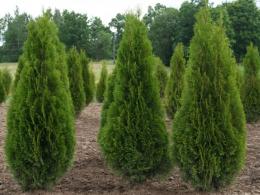
Thuja is considered one of the less demanding forms of coniferous crops: it can grow on any soil, in any climatic conditions and does not require special care. But many gardeners consider the propagation of thuja to be difficult, preferring to purchase ready-made seedlings in specialized nurseries.
In fact, growing thuja yourself is not such a difficult task, and it also brings a lot of positive emotions.
Content:
Reproduction methods
Thuja is propagated in two ways: vegetatively (cuttings) and seed. Propagation by seeds is used quite rarely, since in this case there is a loss of decorative and varietal characteristics of the mother tree. In addition, this is a rather labor-intensive and time-consuming process (to grow a seedling it takes 5-6 years).
Therefore, the most appropriate way to propagate the desired form of a plant while preserving all its decorative qualities is cuttings. If you need to grow an ordinary thuja without preserving its decorative characteristics, then you can try growing it from seeds.
Propagation of thuja by seeds
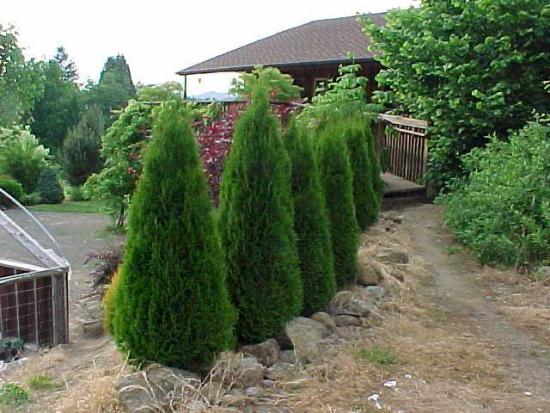
To grow thuja, you should purchase ready-made seeds or collect them yourself from cones. Cones are collected in early autumn, when they are already ripe, but the seeds have not yet had time to fall out. The cut cones are laid out in a thin layer on paper in a room where the air temperature is kept constant (about +7°C).
After the cones have dried, from them husk the seeds, place them in fabric bags and leave them for storage in a cool room. As soon as the ground is covered with the first snow, the bags are placed on a previously prepared bed and covered with earth. Thus, natural stratification will take place.
In the spring, the seeds are sown in the bed at intervals of 10 cm and to a depth of 0.5 cm, sprinkled with earth, on top of which pine sawdust is poured. Caring for crops involves regular moderate watering and protection from the sun in hot weather. The seedlings grow up to 4-5 cm in the first year, up to 10-20 cm in the second, and by the end of the third year they reach 25-40 cm in height. At the end of the third year, plants are picked, and after 1-2 years they are transplanted to a permanent place of growth.
Propagation of thuja by cuttings
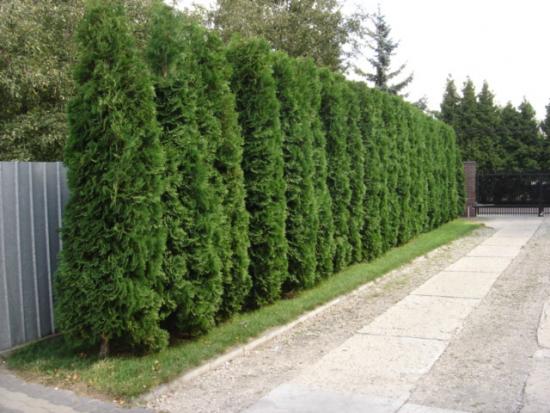
Cuttings - it’s not a difficult task, any gardener can handle it. The main thing is to know the right technology and strictly follow it.
Cuttings are carried out in greenhouses or in other rooms adapted for this purpose. In order for the cuttings to grow and develop well, certain climatic conditions are created in the greenhouse:
- air humidity - below 70%
- air temperature – +20-+23оС
- good lighting
To increase humidity, special air humidifiers are used, and to ensure good lighting, the greenhouse is made transparent.
Cuttings are carried out in the fall; they are not carried out in summer and spring because, as practice shows, most of the cuttings dry out without having time to take root.
For cuttings use two- or three-year-old side shoots thuja with a “heel” (this is what they call a piece of old wood at the base of the shoot). To obtain such a shoot, it is torn off with a sharp movement or cut in a certain way.
For cuttings, choose the strongest shoots that will produce strong and healthy plants.
The needles are cut off from the bottom of the thuja shoots, placed in a solution that stimulates root formation for 10-12 hours, and then planted in a greenhouse. The optimal soil for planting cuttings is considered to be a mixture of peat, turf soil and river sand.
As a rule, they are combined in a 1:1:1 ratio. Before planting cuttings, the soil is disinfected with a solution of potassium permanganate; this is necessary to destroy pathogenic bacteria and pests.
The cuttings are planted in rows, deepening them by 2-3 cm. It is important to ensure that the needles that remain on the shoot are not covered with soil, otherwise this can lead to the development of rot, which is life-threatening to the plant.
Caring for planted cuttings consists of regular watering and ventilation. It is advisable not to water the plant, but to spray it; this will not only prevent the soil from becoming waterlogged, but will also increase the air humidity in the greenhouse. The plant is regularly ventilated and hardened.
When the plants take root, there is no need to rush to send them into the garden. They need to be given time to build up their root mass. For wintering, the rooted cuttings are covered with branches of coniferous trees or dry leaves, or transferred from the greenhouse to the greenhouse.
If the technology of propagating thuja by cuttings was followed correctly, then in the spring the first signs will appear that the plants are well rooted - the first green shoots will appear on the cuttings. Already in the fall, these cuttings can be planted in open ground in a permanent place of growth.
Watch how to propagate and grow thujas in the video:
Interesting information about the vegetable garden

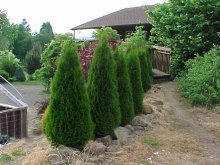
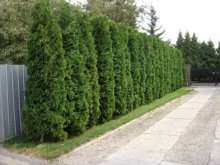

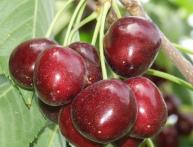

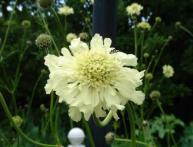
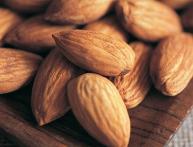
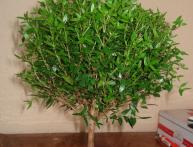
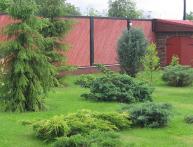
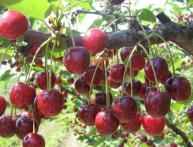
Comments
The seeds in thuja are very weak.They initially need to be germinated in artificial conditions, then in greenhouses. Under normal conditions you cannot grow a bush and this is a fact. It is better to plant cuttings or seedlings of an adult bush.
I first saw thuja many years ago when I went on vacation to Anapa. These trees captivated me with their appearance and the peculiar smell that comes from them.